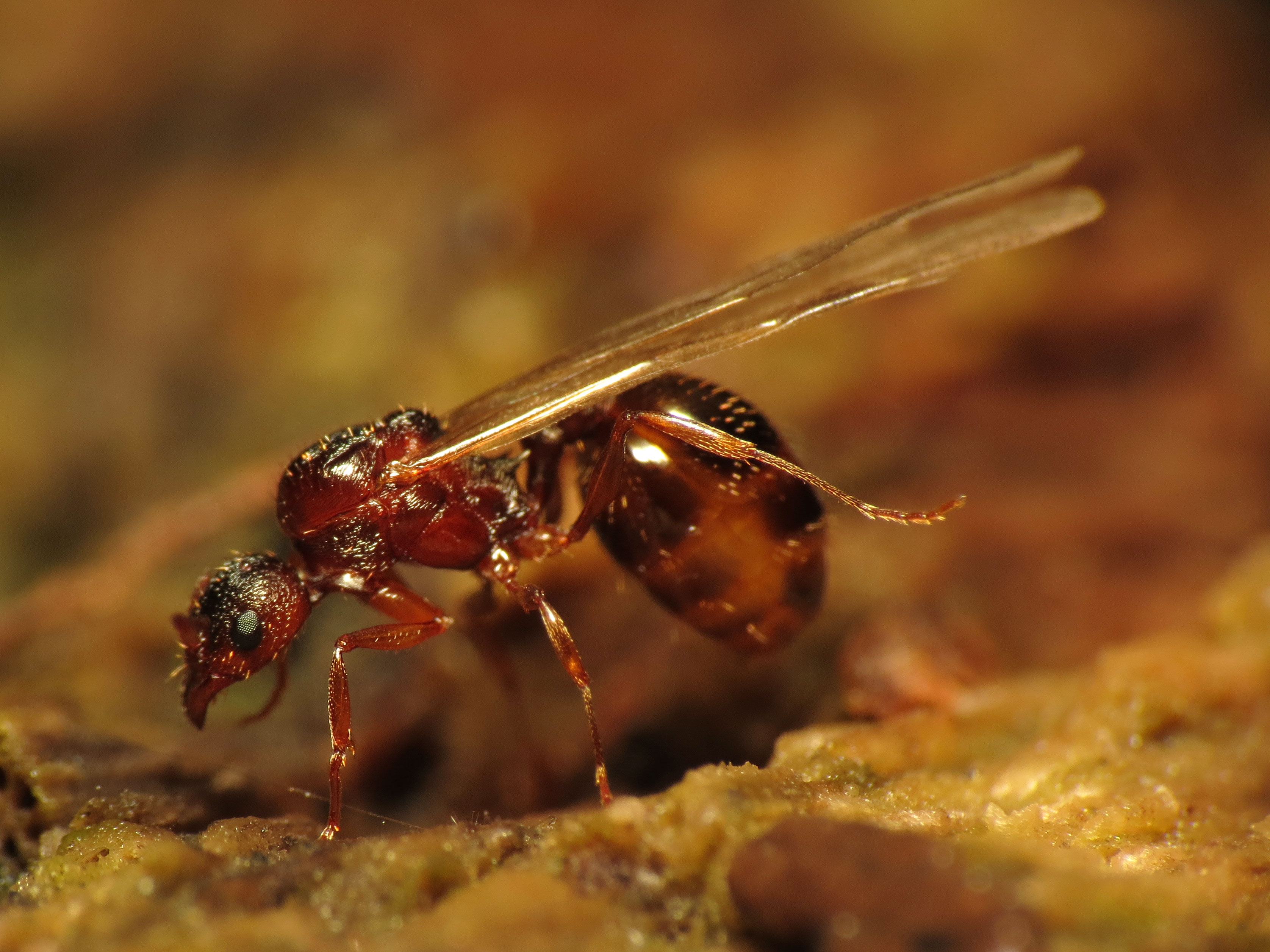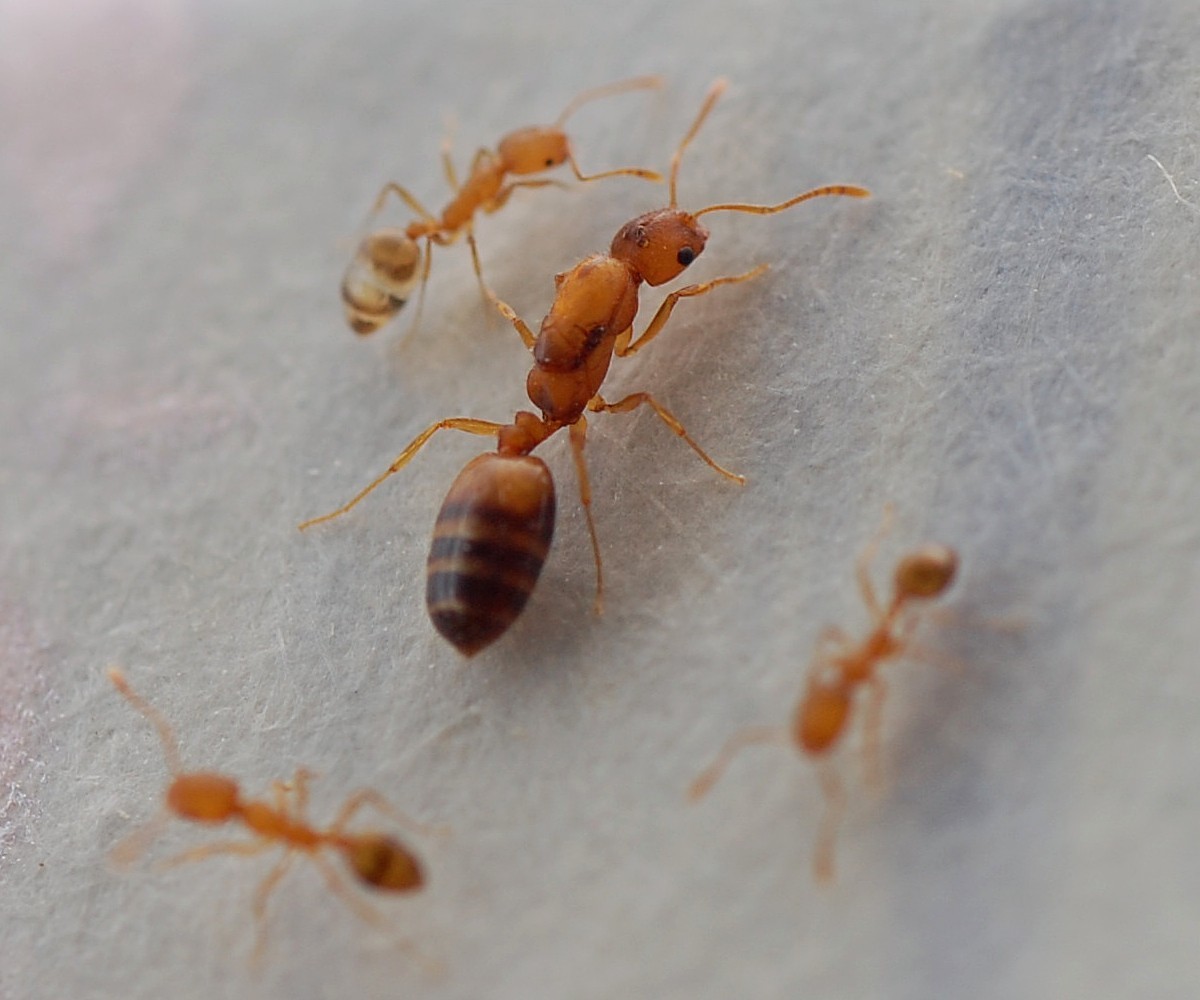Ants are fascinating creatures that come in various shapes and sizes. Michigan is set to experience a surge in ant activity this summer, with several types of these tiny yet mighty insects expected to make their presence known.
In this article, we will discover the six types of ants set to emerge in Michigan this summer. These ants can be found in various forested habitats in Michigan, such as open woodlands and dry upland forests. So, let’s get ready to witness the impressive types of ants set to emerge in Michigan this summer.
You are reading: Discover The 6 Types Of Ants Set To Emerge In Michigan

6 Types Of Ants Set To Emerge In Michigan
Bearded Carpenter Ant (Camponotus subbarbatus)
The Bearded Carpenter Ant (Camponotus subbarbatus) is a species of ant in the family Formicidae. It is also known as the Bumblebee Carpenter Ant.
This species of ant is native to eastern North America and can be found in various forested habitats, including dry upland forests, mesic lowland forests, second growth woods, forest edges, open woodlands, and woodlots. The Bearded Carpenter Ant is a small species of carpenter ant, with a typical colony size of 3,000 individuals or less.
Unlike many carpenter ants, this species is not known to cause significant damage to homes or other human structures. The queen of this species has a striped gaster (abdomen), which is a signature feature of this species in the southeast.
Yellow Shadow Ant (Aphaenogaster fulva)

Read more : Top 10 Animals With Masks Around Their Eyes
The Yellow Shadow Ant (Aphaenogaster fulva) is a medium-sized ant species found in mesic forests and meadows. Here are some key characteristics of this species:
– Workers range from 4-6mm in length, while queens are normally around 7-10mm.
– The predominant color of this ant is tawny or reddish-yellow, which is where its species name “fulva” comes from.
– Nests of this species are typically found in logs and stumps or under stones.
– Although they do not have a sting, Yellow Shadow Ants can bite if they feel threatened.
– This species is a temporary host of other ant species.
Overall, the Yellow Shadow Ant is a moderately common species with distinct physical characteristics and nesting habits that make it unique among other ant species in Michigan.
Little Black Ant (Monomorium minimum)
The Little Black Ant (Monomorium minimum) is a species of ant native to North America. Here are some key characteristics of this species:
– Workers are small, shiny, and dark brown to jet black in color, measuring only about 1 to 2 mm long, while queens are twice the size at about 4 to 5 mm long.
– This species is monomorphic, meaning it has only one caste of worker, and polygyne, meaning a nest may have more than one queen.
– Little Black Ants are scavengers that will consume anything from bird droppings to dead insects.
– They are predators of codling moth larvae and fall webworm.
– Workers may forage in households but nest in soil mounds.
– Colonies are moderately sized, with only a few thousand workers.
Overall, the Little Black Ant is a common species found in various habitats in Michigan, including lawns, gardens, and woodwork.
Pharaoh Ant (Monomorium pharaonis)

The Pharaoh Ant (Monomorium pharaonis) is a small yellow or light brown, almost transparent ant that is notorious for being a major indoor nuisance pest, especially in hospitals. Here are some key characteristics of this species:
– This species is polygynous, meaning each colony contains many queens, leading to unique caste interactions and colony dynamics.
– Pharaoh ants are a tropical species, but they also thrive in buildings almost anywhere, even in temperate regions provided central heating is present.
– Colonies vary greatly in size, with some colonies having only a single queen with a few hundred workers, while others may have hundreds of queens with several thousand workers.
– Queens may live for a year and lay up to 35 eggs per day, while workers develop from egg to adult in 36 days.
– Pharaoh ants are monomorphic, with workers measuring about 1/12 to 1/16 in. long and having twelve segmented antennae with a well-defined, three-segmented club.
– They are omnivorous and feed on sweets, greasy or fatty foods, and even medical bandages.
Overall, the Pharaoh Ant is a major pest in many parts of the world, including the United States, and can be difficult to control due to its unique colony dynamics and nesting habits.
Thief Ant (Solenopsis molesta)
Thief Ants (Solenopsis molesta) are a species of ant that are known for their habit of nesting close to other ant nests, from which they steal food. Here are some key characteristics of this species:
– Thief Ants are small, measuring less than 1/32 inch in length, and are golden yellow to light brown in color.
– They have 10-segmented antennae, which end in large segmented clubs.
– This species is polygynous, meaning each colony contains many queens, leading to unique caste interactions and colony dynamics.
– Thief Ants are called “grease ants” because they are attracted to grease.
– They are highly adaptive in their nesting habits and can nest in exposed soil, under objects on the ground such as stones, logs, bricks, and inside decaying wood in stumps and in woodwork and masonry of homes.
– Thief Ants can be very difficult to eliminate because they are extremely small and can easily remain undetected.
Read more : 12 Types Of Blue Fish
Overall, Thief Ants are a common species found in various habitats in Michigan, including fields, meadows, and urban and suburban areas.
Odorous House Ant (Tapinoma sessile)
The Odorous House Ant (Tapinoma sessile) is a small ant species that is commonly found in North America, including Michigan. Here are some key characteristics of this species:
– Workers are brown to black in color and measure about 1/8 inch in length.
– This species is monomorphic, meaning all workers are about the same size.
– Odorous House Ants have twelve-segmented antennae without a club and mandibles with two apical teeth.
– They are known for the rotten, coconut-like odor they produce when crushed.
– Colonies are polydomous, meaning they consist of multiple nests, and polygynous, meaning they contain multiple reproducing queens.
– Odorous House Ants are highly adaptable and can establish nests in diverse environments, including soil, logs, stumps, and homes.
Overall, the Odorous House Ant is a common household pest that can be difficult to control due to its nesting habits and adaptability.
FAQS
1. How many types of ants are set to emerge in Michigan this summer?
There are six types of ants set to emerge in Michigan this summer, including the Bearded Carpenter Ant, Yellow Shadow Ant, Little Black Ant, Pharaoh Ant, Thief Ant, and Odorous House Ant.
2. Are these ants harmful to humans?
Most of these ants are not harmful to humans, but some, like the Pharaoh Ant, can be a major indoor nuisance pest, especially in hospitals.
3. How can I identify the types of ants in my home?
Ant identification can be challenging, but it is important to correctly identify the species to understand where they may be nesting, their food preferences, and the best method of treatment. You can often identify an ant by looking at images online as they each have distinguishing features. If you are unsure what type of ant is causing problems in your home, then you could also reach out to a pest control technician.
4. How can I get rid of ants in my home?
The most effective way to get rid of ants is to find and treat the nest. Queens must be killed to properly eliminate a colony. If you have an ant problem, it is recommended to call in a pest control professional who can identify the species and develop a plan to rid them from your home.
5. Are there other insects set to emerge in Michigan this summer?
Yes, in addition to the types of ants set to emerge in Michigan this summer, there are other insects waiting to come out this summer in Michigan, including Black Flies, Beetles, and Flying Ants.
Source: https://petstutorial.com
Category: Animals










